
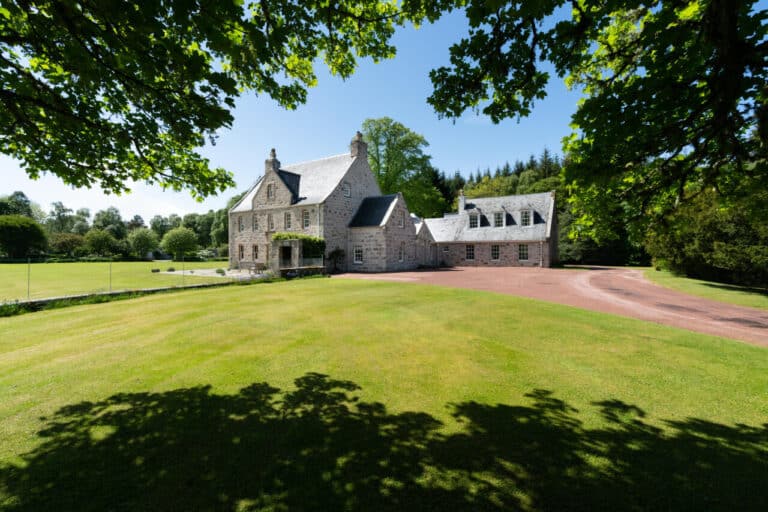




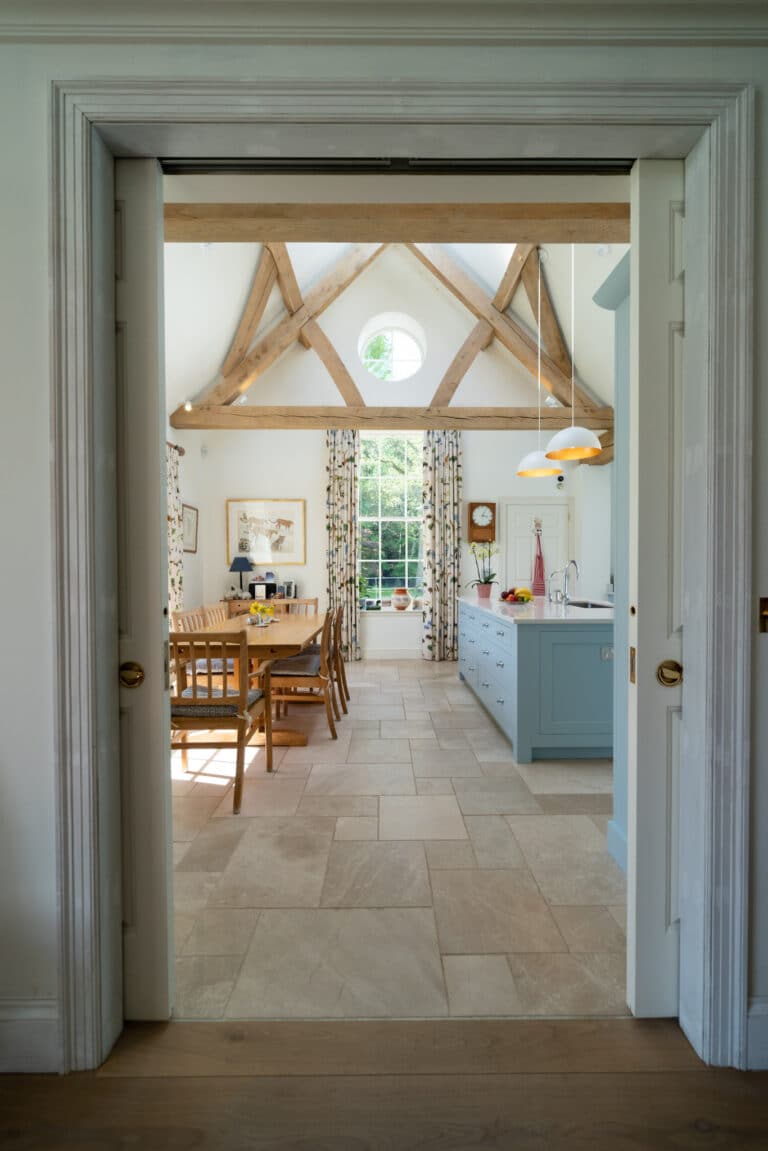


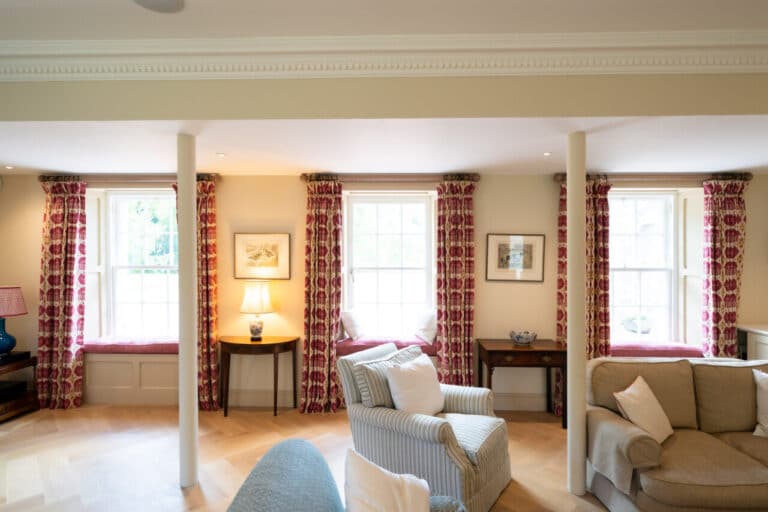





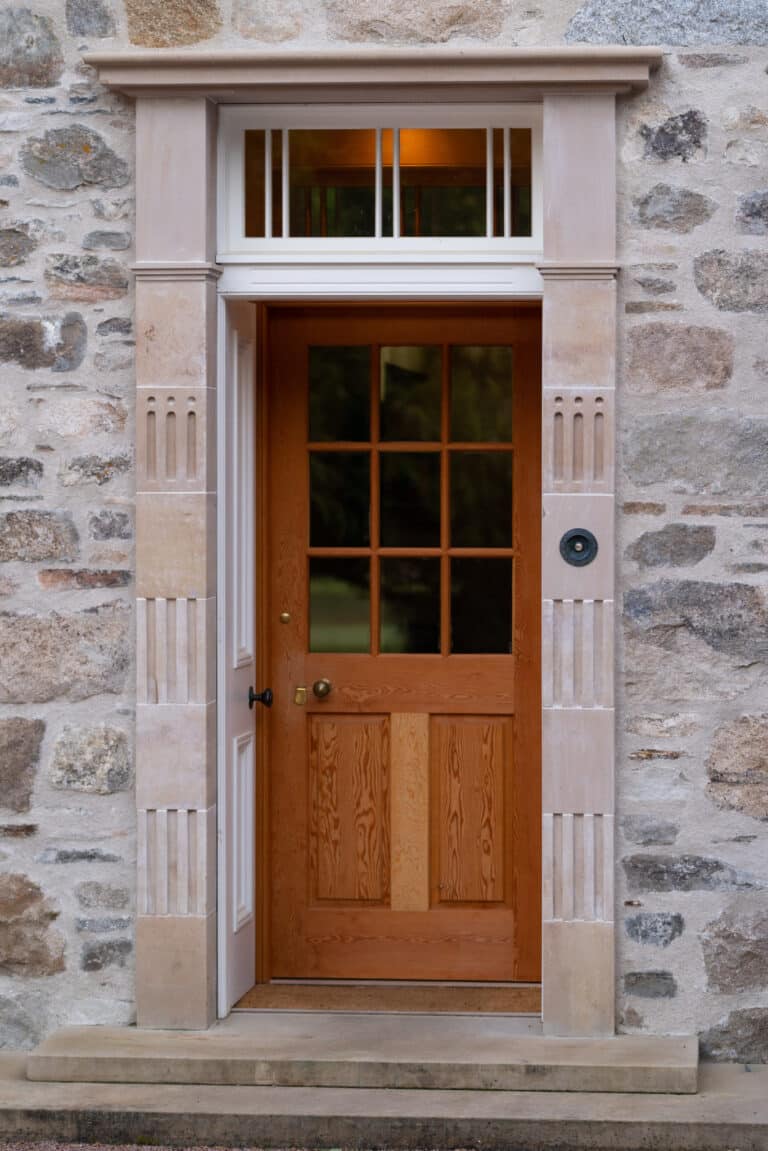

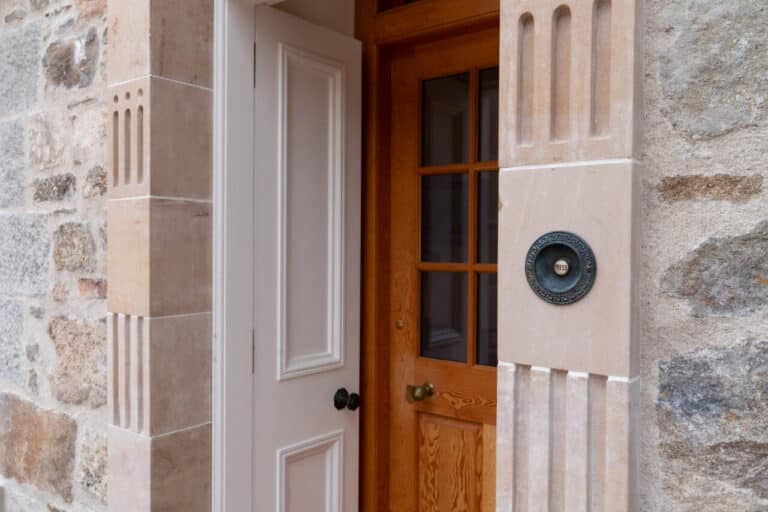




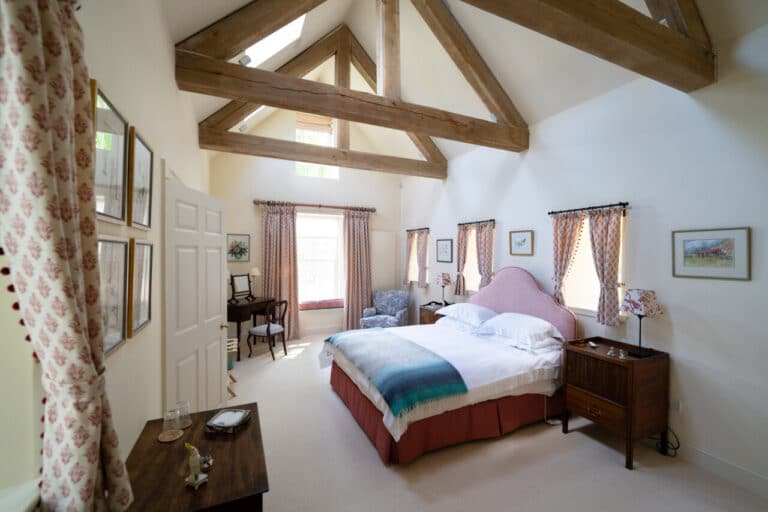


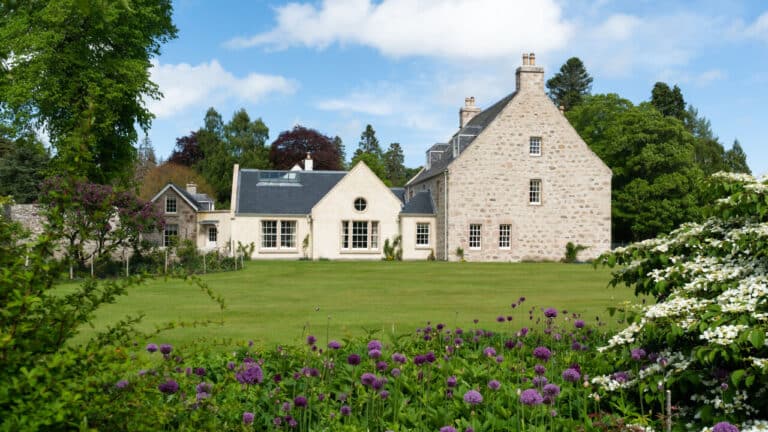

Dating from 1750, this fine B-listed country house overlooking the River Findhorn is one that we’re very excited to work on. Built for Hugh Rose, 16th Baron of Kilravock, it is an impressive traditional building with beautifully kept grounds and a walled garden.
When we were approached by the owners, the 1960s flat-roofed linkage between the three original stone-built portions of the house was suffering from poor levels of thermal insulation and condensation. The owners aspired to replace this portion of the house with an extension built to modern standards. They were looking for a traditional aesthetic befitting the original house, as well as plenty of natural light. The new extension should strengthen the connection between the original parts of the house, improve flow, and provide comfortable living spaces.
It was of particular importance to the client to have a kitchen and dining space in which to entertain guests. We designed these as distinct characterful spaces that relate to each other both in their connection to the original house and to natural light. Accessed sequentially from the entrance hall, the dining room and then the kitchen increase in volume and the amount of natural light filling the space. The dining room is topped with a grand barrel-vaulted ceiling that directs the gaze towards the gable-end windows. In the kitchen, a stunning natural oak frame directs the view up to the full-height ceiling and rooflights. Both spaces share a view over the immaculate lawns that sweep down towards the famed Scottish salmon river.
Additionally, the existing garage was converted into a large entertaining space. An outbuilding, which had served as a gun room and coachman’s flat, was converted into guest accommodation with a bespoke oak-trussed ceiling, and the main house was fully redecorated and had external stonework re-pointed.
The owners appointed Thomas Robinson Architects to take forward early designs by their friend, renowned architect Anthony Close-Smith, based in London.
Working with Anthony Close-Smith`s designs, we developed the proposals, incorporating more detail from the client’s requirements into working drawings for planning approval through to construction. It was critically important for the client to improve the thermal performance and efficiency of the house. We did this with high levels of insulation and robust detailing throughout. You can read more about how we do this in our blog on energy resilience here: Technical Spotlight: Achieving Energy Resilience in Architecture – Blog – Thomas Robinson Architects
Overall, the extension design was aimed at emulating the elegance of the main house. It knits together the lower isolated blocks with a new core containing the dramatic kitchen and dining room. Throughout, we specified appropriate traditional materials, including lime render, slate, and painted timber windows to match the existing house. A defining feature of the new-build portion of the project is the circular windows in the two prominent gables above the kitchen and dining room.
The project has now been completed to a very high standard and will ensure a long future for the property. The house that was previously a collection of poorly connected rooms and buildings has been consolidated into a home that feels purposeful and cohesive.
Previously unused outbuildings are now incorporated into the home as practical and inviting spaces and the client has the space to proudly entertain guests.
Overall, much of the success of the project is down to the commitment and determination of the client, which has been commendable throughout the project even in the face of the Covid-19 virus and the challenges that it presented.
Do you have a specific project idea that you’ve been thinking about? Feel free to reach out to us today, and we can initiate a conversation on how our services can assist you in bringing your vision to life.





















